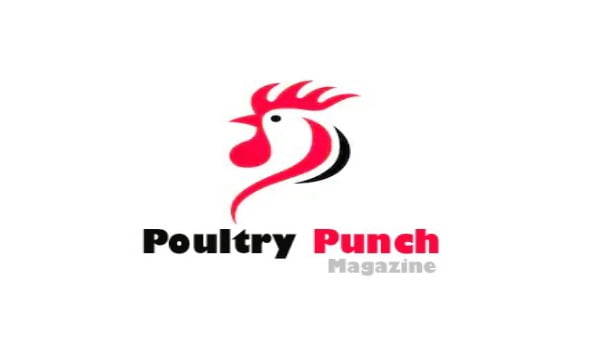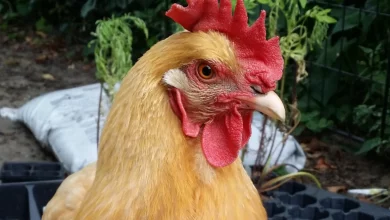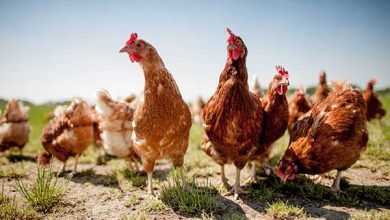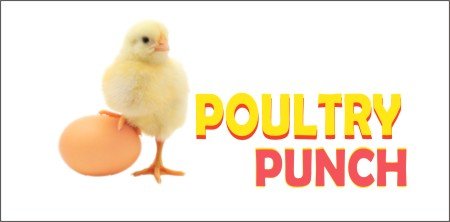UNDERSTANDING AFLATOXICOSIS IN POUTLRY WITH STRATEGIES FOR EFFECTIVE MANAGEMENT AND CONTROL

S. Rajalakshmi1, Ranjani Rajasekaran2, M. Vidhya1 and J. John Kirubaharan3
1Assistant Professors, 2Senior Research Fellow – Department of Veterinary Microbiology,
3Dean, Madras Veterinary College, Chennai – 600 007
Poultry industry is one of the fast-growing sectors of Animal husbandry in Tamil Nadu. The poultry production system in the State is either backyard or commercial rearing. The increasing demand of poultry eggs and meat as valuable source of protein, has imposed a tremendous pressure on the feeding, health, rearing practices and management of poultry. The poultry feed for any production system is procured by the farmers from various outlets. Crude protein is a major component for all the finished poultry feeds, the major sources being – Corn, maize, rice bran and soyabean.
The feed outlets store these finished poultry feeds under varied environmental conditions. Contamination with microorganisms is possible to a greater extent, especially fungi and their mycotoxins which are produced under favorable conditions. Amongst the major microbial factors suppressing poultry productivity and product quality, Aflatoxicosis is an important fungal infection affecting all species of poultry. Aflatoxin is also the most toxic of all the mycotoxins in animals and poultry. The impact of feeding poultry with Aflatoxin-contaminated feed is manifold. The mycotoxin produces deleterious effects on the health and productivity levels in other domestic species too.
AFLATOXICOSIS:
Aflatoxicosis is a type of mycotoxicosis, caused by the fungi – Aspergillus flavus and A. parasiticus. A great economic impact of Aflatoxicosis is felt by the crop and poultry producers. Mycotoxins are the toxic metabolites synthesized by some naturally-occurring fungi on animal feed, feed ingredients and other crops. Aflatoxins, a specific group of mycotoxins are secondary metabolites produced by some species of the Genus: Aspergillus. Of the various forms of Aflatoxins, Aflatoxin-B1 (AFB1) is more toxic and more of a risk for human food, in both plant and animal products.
Sources of Aflatoxins and predisposing factors:
Aspergillus fungi can grow and contaminate grains and cereals (maize and corn commonly) at any time. This contamination may arise either due to heavy rains at harvest and post-harvest, or during transportation, or during processing of feed ingredients, or formulated feeds after processing, or inadequate drying of crop before storage. The fungal spores remain dormant until a moisture level of more than 12 per cent, temperature of 25-35oC, humidity of 80 per cent and adequate aeration are available, which activate their growth.
Safety level of Aflatoxins:
About 20 ppb of Aflatoxin is considered as the highest safe level in the poultry feeds. The toxin contamination level in feedstuffs has been reported to be of a wide range, and usually crosses 20 ppb in the feeds of most countries. Also, the level of this major mycotoxin in the feed is often influenced by the co-occurrence of other mycotoxins at different levels, thereby worsening the disease condition.
Impact of Aflatoxicosis:
The condition affects all domestic species, but poultry are the most sensitive to Aflatoxin contamination, with the order of sensitivity being ducks > turkeys > Japanese quails > chickens. The chicks are most often affected with high mortality. Reduced feed intake, poor feed conversion ratio, decrease in quality and quantity of egg production, predisposition to secondary infections are the common clinical manifestations. Impaired hepatic protein production contributes to the toxin-induced changes in eggs. On the whole; haematological, immunological and pathological effects are the major implications in birds feeding on aflatoxin-contaminated feed, with reduced immune response against other major infections like Newcastle disease, avian influenza, etc. It also causes changes in the muscle arrangement, thereby reducing the dressed weight. The poultry products arising out of these intoxicated poultry are in turn unsafe for human consumption too.
Prevention strategies:
The preventive methods which can be followed either during harvest or storage of feedstuffs, can reduce the potential risk of Aflatoxin contamination. The feed ingredients used for formulating the poultry ration must be safe and maintained clean at all levels to prevent contamination. Therefore it is critical to evaluate the microbiological quality of feed and potential sources of contamination during the feed production process. A practical note on the detoxification procedures are discussed below;
- Physical methods:
- Exposure to sunlight or irradiation can reduce the toxin content considerably.
- Blowing away grain dust and other shallow particles by aspiration also clears the contaminant to some extent.
- Solvent extraction of toxin from feedstuffs.
- Chemical methods:
- Treating Aflatoxin-contaminated feed with ammonia was commonly used earlier, but the toxicity of the reaction product classified it as ‘unsafe’, and hence not used.
- Adsorption of the toxin with potential mycotoxin binders like bentonites, during the digestive process in the gastrointestinal tract,
- Biological methods:
Many microorganisms or enzymes are being used to reduce the activity of the different mycotoxins, converting them into non-toxic metabolites. The Eubacterium strain from bovine rumen fluid, yeast strain – Trichosporon mycotoxinivorans; some probiotic strains of Lactobacillus, Bifidobacterium, Propioniobacterium have also been reported to function as mycotoxin-deactivating feed additives.
Control strategies:
The following practices may be adopted to avoid the contamination risk of Aflatoxicosis;
- Ensuring complete drying of harvested grains
- Dry storage of feed ingredients.
- Pelleted feed must be preferred, as the production process destroys the fungal spores.
- Fish meal if used in the poultry feed, must not be stored more than three weeks.
- Hygienic maintenance of feeders, waterers, feed storage bins and regular disinfection of premises with 2-3% formalin or copper sulphate.
- Frequent clearing of feed or water spillage and wet litter.
- Environmental monitoring on a periodical basis.
- Proper ventilation of poultry houses to avoid high relative humidity.
- Transport of feed composites from the feed mills to the retailers or farms are potential portals of contamination. The feed bags must not be transported in a dumped condition.
- Nutritional balancing – increasing crude protein content, supplementation of additional levels of riboflavin, pyridoxine, folic acid and choline. Supplementation with Selenium helps to boost detoxification and immune functions of the birds.
- The farmers may be encouraged to follow GAP (Good Agricultural Practices) after the harvest of crops. GAPs include timely planting, providing adequate plant nutrition, control of weed growth in plantation area and crop rotation.
- The feed manufacturers also must have a rapid screening of Aflatoxin as a quality control check, ensuring quality supply of ingredients.
- Antifungal agents like organic acids, copper sulphate, gentian violet may be used in and around storage bins.
How to sample feed for Mycotoxin analysis?
Usually mycotoxins are not evenly distributed in the animal/poultry feed. Some areas of feed sample may contain very high mycotoxin levels; other areas may contain no detectable amounts. The quality and quantity of sample provided for analysis determines the extent of detection in the feeds. The sample should reflect all of the feed available at the time of occurrence of the problem.
Following are some general considerations to be kept in mind while sampling feeds for mycotoxin analysis:
- The sample must be collected soon after onset of animal /bird health problems.
- A good quantity of at least 500 grams of feed sample must be collected from different sites, so that mycotoxin contamination is not missed. Feed must be sampled from sites of ingredient storage, feed manufacture, transport, feed storage bins and feeders.
- Sampling based upon visible presence of molds does not always provide a sample that contains mycotoxins. Detectable amounts of any known mycotoxins may not be present in very mouldy feeds, whereas feed appearing good may have very high concentrations.
- It is best to collect a sample during movement of the feed, like when moving it from the storage bin into a grain truck.
- Feed samples must be preferably dry before transport to the feed testing laboratory. Wet feed sample favors the growth of moulds, especially if placed in a plastic bag. The feed may be dried in an oven for a short time, to less than 13% moisture for best preservation.
- Send the feed sample in zip-lock bag on ice in a thermocol box, or in a clean and dry paper wrapping.
Aflatoxins are of equal concern to the human beings because of the residues left in the milk, meat, eggs and animal products. Regular screening of poultry feed both at the manufacturer’s end as well as at the poultry farmer’s end will help to curtail the condition, preventing huge economic loss. Appropriate use of detoxifying agents and toxin binders can help in alleviating the toxin issues without affecting the birds. In conclusion, good quality of tested poultry feed, good agricultural and management practices and proper nutritional balance can help evade the effects of Aflatoxicosis for improved productivity in poultry farms.
REFERENCES
- Azziz-Baumgartner E, Lindblade K, Gieseker K, et al. Case-control study of an acute aflatoxicosis outbreak, Kenya, 2004. Environ Health Perspect. 2005;113(12):1779-1783.
- Chen X, Grenier B, Applegate TJ. Aflatoxins in Poultry. Purdue Extention. 2013:1-6.
- Dhama K, Chauhan R, Mahendran M, et al. Aflatoxins – hazard to livestock and poultry production: a review. J Immunol Immunopathol Soc Immunol J Immunol Immunopathol. 2007;9(2):1-15
- Hoerr BFJ, Diagnostic V. Overview of Mycotoxicoses in Poultry: Mycotoxicoses: Merck Veterinary Manual. :3-7
- Monson M, Coulombe R, Reed K. Aflatoxicosis: Lessons from Toxicity and Responses to Aflatoxin B1 in Poultry. Agriculture. 2015. doi:10.3390/agriculture5030742
- Nemati Z, Janmohammadi H, Taghizadeh A, Nejad HM, Mogaddam G, Arzanlou M. Occurrence of Aflatoxins in poultry feed and feed ingredients from northwestern Iran. Eur J Zool Res. 2014;3(3):56-60.
- Tiwari S, Sharma V, Tiwari AN, Shukla A. Aflatoxicosis in Poultry. Int J Recent Res Life Sci. 2015; 3(3):15-19.




